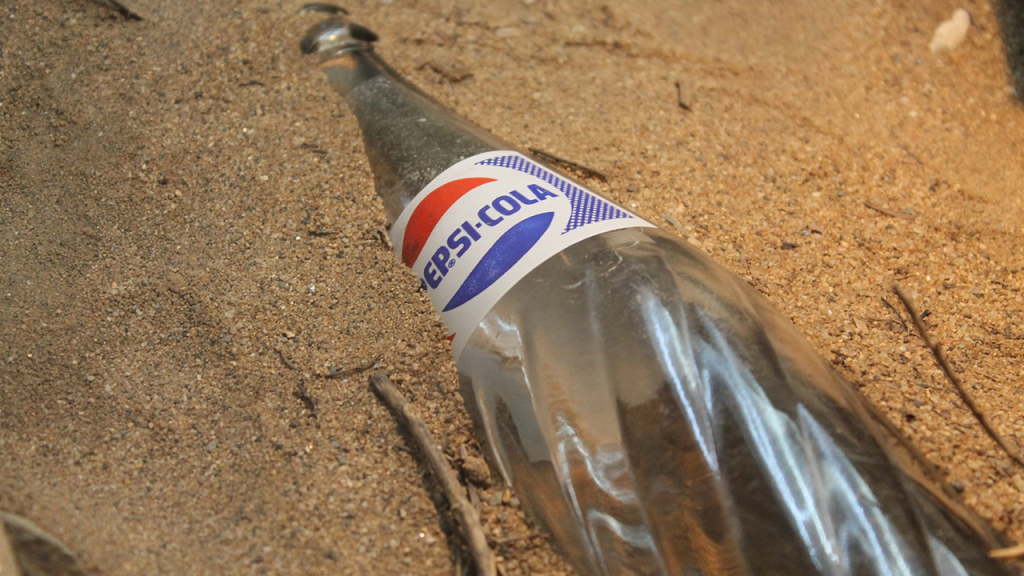 Today Pepsi is one of the strongest brands in the world with a capitalization of nearly $125 billion. But this wasn’t always the case. It may be hard to believe, but Pepsi was on the verge of bankruptcy during its first forty years of business. In fact, Pepsi-Cola’s financial situation was so bad that three times between 1922 and 1934, Pepsi-Cola approached Coca-Cola and offered to sell out to their competitor. All three times Coca-Cola rejected their offer.
Coca-Cola’s rejections could be among three of the biggest marketing snafus in history, while Pepsi’s “12 ounce” jingle campaign turned out to be one of the most successful marketing efforts of all time.
Not only did the campaign prove a success for Pepsi, but it revolutionized the soda industry as a whole. This case study is an interesting one indeed and shows how perseverance in the marketplace and promotional advertising can be worth billions.
Today Pepsi is one of the strongest brands in the world with a capitalization of nearly $125 billion. But this wasn’t always the case. It may be hard to believe, but Pepsi was on the verge of bankruptcy during its first forty years of business. In fact, Pepsi-Cola’s financial situation was so bad that three times between 1922 and 1934, Pepsi-Cola approached Coca-Cola and offered to sell out to their competitor. All three times Coca-Cola rejected their offer.
Coca-Cola’s rejections could be among three of the biggest marketing snafus in history, while Pepsi’s “12 ounce” jingle campaign turned out to be one of the most successful marketing efforts of all time.
Not only did the campaign prove a success for Pepsi, but it revolutionized the soda industry as a whole. This case study is an interesting one indeed and shows how perseverance in the marketplace and promotional advertising can be worth billions.
A Secret Recipe: Pepsin and Kola Nuts
First introduced in North Carolina as “Brad’s Drink” in 1893 by Caleb Bradham, the name was changed to Pepsi-Cola in 1898 mainly because of Pepsi’s secret ingredients. Digestive enzymes named pepsin and kola nuts were used in the creation of this special drink. However, when Bradham unsuccessfully speculated on wildly fluctuating sugar prices (shown below), the company faced bankruptcy.
A series of buyouts and structural re-organizations occurred between 1922 and 1934. In 1931, the National Pepsi-Cola Co. reorganized as Pepsi-Cola Co., selling its assets to Roy C. Megargel. After Megargel also failed to make Pepsi-Cola Co. profitable, he sold the company to Charles Guth, President of Loft, Inc. Loft, a candy manufacturer and retailer that owned Happiness Candy Stores had been around for 20 years prior to acquiring Pepsi . The Loft-operated Happiness Candy Stores had soda fountains and saw the marriage as a good fit.
Pepsi– Rejected by Coke, Acquired by Loft
Losses and Loft Suits
Where there are losses, there are law suits. Claiming that the companies had been mismanaged, shareholders sued Happiness Candy Stores, Inc. as well as Loft, Inc. Loft, Inc. sued Guth since he had used the finances and facilities of Loft, Inc. to help Pepsi-Cola, Co. succeed.
Guth not only increased Pepsi’s profits by selling the syrup to his former employer, but he made one of the most brilliant marketing decisions in history. He had the excellent idea of packaging Pepsi-Cola in twelve-ounce bottles rather than 6.5 ounce bottles while keeping the price the same at five cents. Coca-Cola and other soft drinks were then sold in 6.5 ounce bottles at the same price. Guth introduced the clever jingle “Pepsi-drink for you”. As a result, Pepsi’s sales increased and profits doubled between 1936 and 1938. Pepsi stock soared, rising one-hundred-fold within two years, as shown in the chart below:
Loft, Inc. may not have been able to run a candy business or a candy store business profitably, but they did know how to win a lawsuit. When Guth v. Loft, Inc. was decided in Loft’s favor, the company was saved. The real question was how to turn all of these law suits for and against Loft, Inc. to the company’s advantage. E. A. Le Roy Jr., President of Loft, Inc., made a series of brilliant moves that not only resolved all of the law suits, but put Pepsi on the road to becoming a hundred-billion dollar company.
First, Le Roy spun off the Happiness Candy Stores, Inc. He eliminated the $1.5 million owed to Loft, Inc. by Happiness Candy Stores, Inc., absorbed the candy store, of which the company owned over 70%, then spun the company off to shareholders as Loft Candy Stores, Inc. The loss-making candy business was eliminated from the company.
Compare this performance with that of Loft, Inc. whose stock had fallen from $25 in 1919 to $2 when the company established its 80% ownership of Pepsi-Cola, Co. The stock rose to $22 by the time the reverse acquisition of Pepsi-Cola Co. occurred on June 30, 1941. The story of the Happiness Candy Stores was similar, with its stock falling from $25 in 1919 to $0.125 in 1941 when the company ceased to exist.
Today, Pepsi is one of the strongest brands in the world. Had it not been for the decisions of Charles Guff and E. A. Le Roy Jr., Pepsi might have met the same fate of Loft Candy, to become something you only read about on the Internet. Of course, PepsiCo had to make many good corporate decisions over the past 75 years to bring the company to the point it is at today, but you have to admire the way Guth and Le Roy turned around a loss-making company to become one global giant. Along with Coca-Cola, Pepsi dominates the soft drink business worldwide and shows no signs of slowing down.

